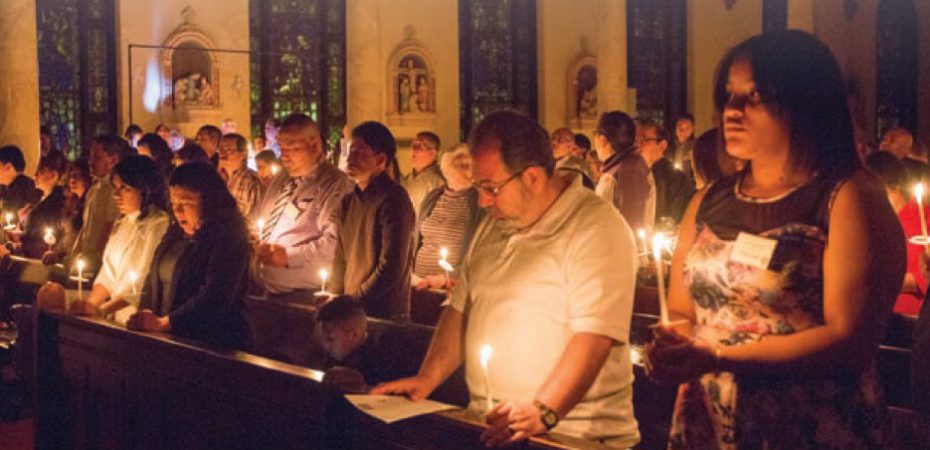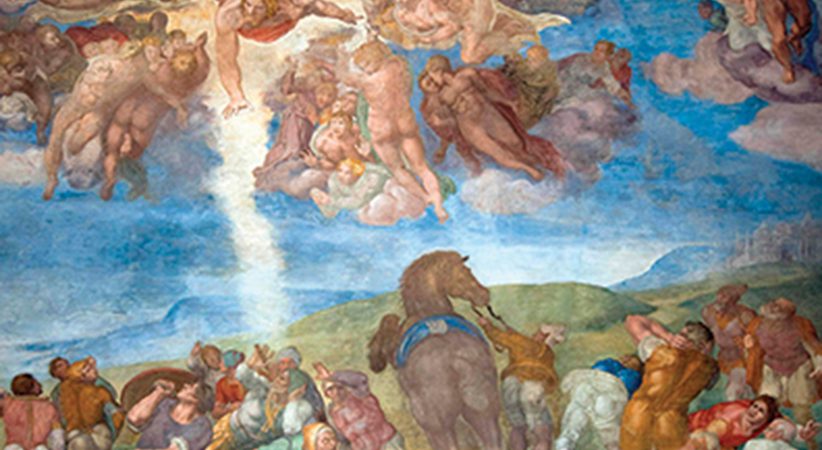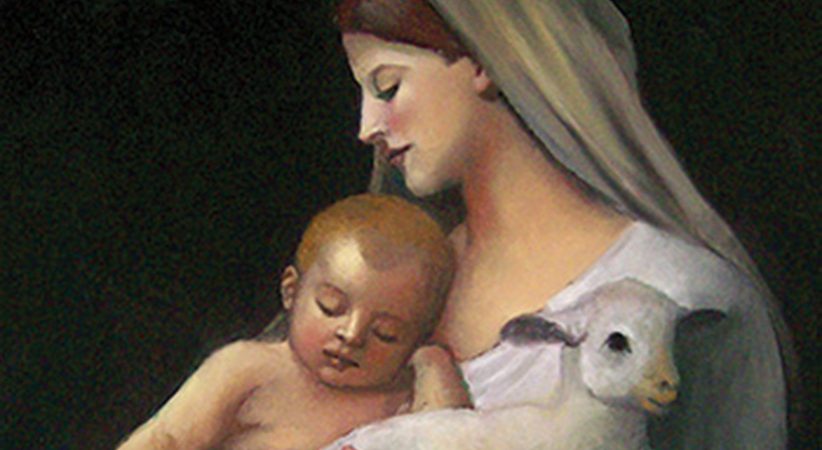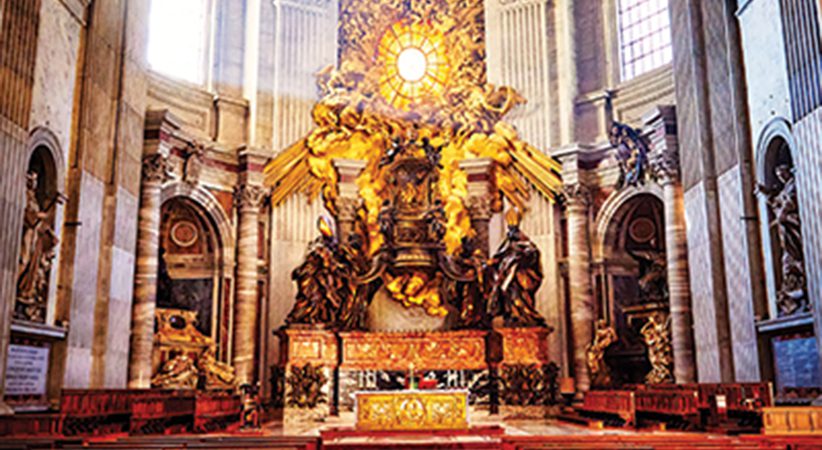The Paradigm Shifts for Successful RCIA
On a world-shaking, world-transforming mission to reveal and to communicate the love of God to all
Nick Wagner Comments Off on The Paradigm Shifts for Successful RCIA
In the winter of 1990, I was sitting on a cold folding chair in the basement of a rural Minnesota church. There were a half-dozen other hearty souls gathered in a circle with me, most of us bent over Styrofoam cups of weak coffee trying to keep warm. I was the brand-new director of worship for the diocese, and I had come to talk to volunteers about how to do the Rite of Christian Initiation of Adults.
Back then, I didn’t know a lot about how to “do” RCIA. But I did know one thing. If we were going to succeed, we needed a paradigm shift.
A big one.
And not just one.
The Second Vatican Council said that Christians have a primary mission — to reveal and to communicate the love of God to all (cf. Ad Gentes, No 10).
As an integral element of carrying out this mission, the council called for a restoration of the catechumenate. The catechumenate is not intended to be a bigger, more complicated version of adult religious education. That catechumenate is a discipleship training process.
The first thing I told the folks at that parish was that we Catholics have a mission — to reveal and to communicate to all the love of God in Christ. The single most important thing we have to tell seekers is that they are being initiated into that mission.
Shift 1: Change Our Parishes
In “Augustine and the Catechumenate” (Liturgical Press, $39.95), author Jesuit Father William Harmless outlined the major paradigm shifts that the restoration of the catechumenate has caused.
Harmless explained that the catechumenate enacts a vision “which reshapes community roles, which radically redefines the meaning of catechesis, and which sees baptism as the taproot and catalyst for life-long transformation” (p. 9).
What I tried to explain to the volunteers that night is that before we can do RCIA, we have to change. We have to change ourselves, and we have to change our parishes.
Shift 2: Go Public

Like a lot of Catholics, those rural Minnesotans were a bit stoic about their faith. They didn’t want to impose by being too public about what they believed. But conversion cannot be private. We are not promising to know and follow the rules. We are promising to be missionary disciples. Our conversion is to a person and to the mission that person left us. Our baptism is a vocation to be public witnesses to the Good News that Jesus saves.
The first public step toward baptism is the celebration of the Rite of Acceptance into the Order of Catechumens. The RCIA says this rite is “of the utmost importance” (41). It is the first time the parish as a whole meets the seekers and promises to accompany them. The RCIA describes this rite as one that “manifests [the seekers’] desire publicly” (41).
This willingness to stand up publicly for faith is a criterion for readiness for becoming a catechumen. The seekers don’t have to be very good at being public witnesses yet. They just have to have enough desire and courage to stand before the community and say out loud what they seek from God and the Church.
During the period of the catechumenate, they will grow in strength and skill as they “learn how to work actively with others to spread the Gospel and build up the Church by the witness of their lives” (RCIA, 75.4).
Even before they are baptized, catechumens are obligated to witness publicly to their conversion to Jesus Christ.
……………………………………………………………………………………………………………………………………………………………..
The No. 1 job for every RCIA catechist
Pope John Paul II said in his apostolic exhortation Catechesi Tradendae, “The definitive aim of catechesis is to put people not only in touch but also in communion and intimacy, with Jesus Christ” ( No. 5). We are not merely dispensers of knowledge; we are agents of conversion.
The mystery as to how to cause conversion is a mystery of love, not a mystery of technique. The how-to of developing a love relationship with Jesus, however, is pretty straightforward. The RCIA gives us six keys or principles for accomplishing this task. If you ground your RCIA process in these six principles, you will be incredibly successful at converting hearts and making lifelong disciples.
The six keys every RCIA team should know by heart:
The initiation of catechumens is a gradual process.
It takes place within the community of the faithful.
It joins the catechumens in reflecting on the value of the paschal mystery.
By renewing their own conversion, the faithful provide an example that will help the catechumens to obey the Holy Spirit more generously.
The rite is suited to a spiritual journey of adults.
The process varies according to the many forms of God’s grace, the free cooperation of individuals, the action of the Church and the circumstances of time and place (cf. RCIA, Nos. 4-5)
Knowing these six keys and building your RCIA formation process on them is not difficult in the sense of “hard to understand.” But it is a very big challenge to implement each of these six keys every day, in every aspect of our RCIA processes.
……………………………………………………………………………………………………………………………………………………………..
Shift 3: Work of the Community
When I was 19, I was standing in the stacks of a Catholic college library. Almost at random, I pulled down a copy of the documents of Vatican II. I lost track of time as I stood there reading. I was struck by the image of Church and how different it was from the image I had grown up with.
I learned that day that all the baptized share in the one priesthood of Christ. Truly, the ordained, ministerial priesthood is essential to the mission of the Church. But just as essential is the royal, baptismal priesthood. In fact, the ministerial priesthood is at the service of the baptismal priesthood (cf. Catechism of the Catholic Church, 1120).
In that small Minnesota parish years later, many of the parishioners still thought it was the priest’s job to take care of people who wanted to become Catholic. The ordained pastor is the official shepherd of the initiation process, but he does not accomplish initiation on his own. The RCIA recovers an ancient understanding that it is the entire baptismal priesthood, striving for holiness and living in Christian community, that is responsible for initiation.
We fall short of the Church’s vision, however, when we confine the ministry of initiation to an elite few and ask them to provide lectures, handouts and videos. That is a regression to an image of the Church that identifies only some of us as holy. The Church’s vision is that all of the baptized priesthood are responsible for proclaiming the Gospel and making disciples.
Initiation is always an act of immersion into the full Body of Christ in all of its manifestations. Harmless puts another way: “The RCIA calls the Church to see and to be what it is: the people of God sent on a world-shaking and world-transforming mission — evangelizing, witnessing, teaching, serving, healing, dying to self and rising to new life” (p. 11).
…………………………………………………………………………………………………………………………………………………………..
A Summons to Friendship with Jesus
“I dream of a ‘missionary option,’ that is, a missionary impulse capable of transforming everything, so that the Church’s customs, ways of doing things, times and schedules, language and structures can be suitably channeled for the evangelization of today’s world rather than for her self-preservation. The renewal of structures demanded by pastoral conversion can only be understood in this light: as part of an effort to make them more mission-oriented, to make ordinary pastoral activity on every level more inclusive and open, to inspire in pastoral workers a constant desire to go forth and in this way to elicit a positive response from all those whom Jesus summons to friendship with himself.” — Evangelii Gaudium, No. 27.
……………………………………………………………………………………………………………………………………………………………
Shift 4: Missionary Disciples
One objection those Minnesota farmers raised was that it takes too long for someone to become Catholic. However, from the moment a seeker is first consecrated as a catechumen, they are joined to the Church. We embrace them as one of our own, and they are forever part of the household of Christ (cf RCIA, 47). While they cannot yet participate in the sacraments, we expect them to take part in the Sunday celebrations of the word of God and celebrate blessings and other sacramentals.
We expect them, even before baptism, to spread the Gospel and participate in the building up of the Church (cf. Ad Gentes, No. 14). If they marry, they are married in the Church with the appropriate rites. Should they die before baptism, they receive a Christian burial (RCIA, 47).
The initial requirements to become part of the household of Christ are very basic, and a seeker can become a catechumen very soon after they express a desire to be baptized.
The prerequisite for making this first step is that the beginnings of the spiritual life and the fundamentals of Christian teaching have taken root in the candidates. Thus there must be:
While they may spend several years in the catechumenate (cf. RCIA, 78), they do not wait long at all to become active members of the household of Christ.

Shift 5: Proper Order
As of 2019, 13 dioceses in the United States have restored the order of the initiation sacraments. This is in addition to several dioceses in Canada.
In 2007, these dioceses received affirmation and encouragement from Pope Benedict XVI in an apostolic exhortation: “We need to ask ourselves whether in our Christian communities the close link between baptism, confirmation and Eucharist is sufficiently recognized. It must never be forgotten that our reception of baptism and confirmation is ordered to the Eucharist. Accordingly, our pastoral practice should reflect a more unitary understanding of the process of Christian initiation” (Sacramentum Caritatas, No. 17).
When I got to this part of our conversation, the small circle of volunteers worried that their teenagers would have no way of making an adult faith commitment. However, confirmation has never been a maturity sacrament.
St. Thomas Aquinas taught: “Age of body does not determine age of soul. Even in childhood man can attain spiritual maturity: as the book of Wisdom says: ‘For old age is not honored for length of time, or measured by number of years.’ Many children, through the strength of the Holy Spirit they have received, have bravely fought for Christ even to the shedding of their blood” (Catechism, No. 1308).
The restoration of the proper order of the initiation sacraments in the Rite of Christian Initiation of Adults helps us understand more clearly the function and relation of baptism and confirmation. The RCIA says: “In accord with the ancient practice … adults are not to be baptized without receiving Confirmation immediately afterward, unless serious reason stands in the way. The conjunction of the two celebrations signifies the unity of the paschal mystery, the close link between the mission of the Son and the outpouring of the Holy Spirit, and the connection between the two sacraments through which the Son and the Holy Spirit come with the Father to those who are baptized” (No. 215).
In other words, celebrating all three sacraments of initiation in conjunction reveals the mystery of the Trinity. Celebrating them in a disjointed order confuses that revelation.
Shift 6: The Norm
Infants were baptized beginning in the New Testament era. However, adult initiation was the norm well into the fourth century. Then by the fifth century, for a mix of reasons, adult initiation faded and infant baptism became universal. That remained the case until the Second Vatican Council.
By the time Aquinas was writing about baptism, the Church and society, at least in the West, were pretty much one and the same. So baptism was not a conversion from a pagan world to the reign of God. It was the process of washing away of original sin and bringing the baby into a state of grace.
One of the women in our little group wanted to know if the Church was doing away with infant baptism. While the RCIA restores the norm of adult initiation, the vast majority of baptisms will still be infant baptisms. Theologian Aidan Kavanagh pointed out, “A norm has nothing to do with the number of times a thing is done, but it has everything to do with the standard according to which a thing is done” (“The Shape of Baptism: The Rite of Christian Initiation of Adults,” p. 108).
The reason adult initiation is the norm for the Church is not simply because it is an older practice or that infant baptism is somehow less worthy. By making adult initiation the norm, we tell both the catechumens and the faithful why we exist as Church — to reveal and to communicate the love of God in Christ to all.

Shift 7: Redefines Conversion
RCIA is basically a conversion machine. We put unbelievers in one side of the machine and they come out the other side as disciples. We all know it’s not that simple, but it helps to keep in mind that this is the overall purpose of the Rite of Christian Initiation of Adults, breaking it down into “input” and “output.”
Input:
Output:
My coffee cup was empty and the hour was late. The folks in the circle shifted in their seats, not saying anything. Finally, an older man raised his head, revealing worry lines beneath his cap.
“Who’s going to do all this?” he asked.
“We are,” I said. “With God’s help.”
Nick Wagner is co-founder and co-director of TeamRCIA.com, a free resource for forming Christians for life. For a free e-book, “RCIA’s Six Keys to Making Lifelong Disciples,” go to teamrcia.com/sixkeysbook.
……………………………………………………………………………………………………………………………………………………………..
Eight Core Items That Define Conversion
So what happens inside this conversion machine? What do we do so that seekers come out the other side as strong, believing disciples? This was the biggest paradigm shift for that Minnesota parish and for most Catholic parishes.
In “Augustine and the Catechumenate” (Liturgical Press, $39.95), Jesuit Father William Harmless lists eight core things that happen in the catechumenate process that define conversion (pp. 15-18; Father Harmless is actually citing an article by Robert Duggan, “Conversion in the OCIA,” Ephemerides Liturgicae).





